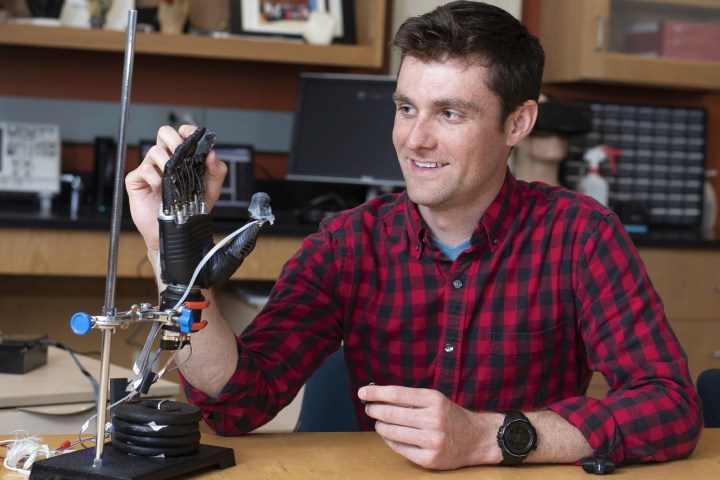
There’s no doubt that bionic prostheses have evolved by leaps and bounds in recent years, thanks to various technological breakthroughs. But one thing that most of them can’t do is let their wearers feel pain. And although it might seem odd that a prosthesis user would want their bionic limb to convey pain signals, engineers at Johns Hopkins University who have been working on such a device tell us that it’s genuinely useful.
“We created an e-dermis, a new electronic dermis, that goes over the fingertips of a prosthesis. The e-dermis is able to detect something that is painful or not,” Luke Osborn, a graduate student in biomedical engineering who worked on the project, told Digital Trends. “When something that is painful is detected, the prosthesis and the user perceive this sensation and the hand lets go of the object. This is exciting because, for the first time, a prosthesis can feel not only touch but something that is painful as well. The e-dermis is meant to mimic the skin in that it contains different artificial receptors to convey these sensations of light touch or pain.”
It’s easy for us, as non-prosthesis wearers, to think of our limbs as being there to perform certain functions and little more. That’s because we’ve not had the experience of losing sensation in our hands or arms, as is the case with an amputee who has had to adopt a prosthesis. No matter how good it might be at carrying out everyday actions … a bionic limb without sensation is unlikely to feel like an entirely adequate replacement for a missing appendage.
“After many years, I felt my hand, as if a hollow shell got filled with life again,” said the unnamed amputee who tested the e-dermis tech for the team.
To provide its sensory feedback to a prosthesis user, the e-dermis skin turns pressure information into a signal that can stimulate the wearers’ peripheral nerves. The idea is that, when something happens that would cause pain in a real limb, this information is transmitted to the wearer, making the limb feel more lifelike and realistic as a result. This could be useful in scenarios in which the prosthetic limb risks being damaged.
“We have demonstrated the feasibility [of this technology],” Nitish Thakor, professor of biomedical engineering at Johns Hopkins, told Digital Trends. “The next steps are a wider range of studies on more amputees and to bring this work to a practical availability to many more amputees.”
A paper describing the work was published in the journal Science Robotics.


